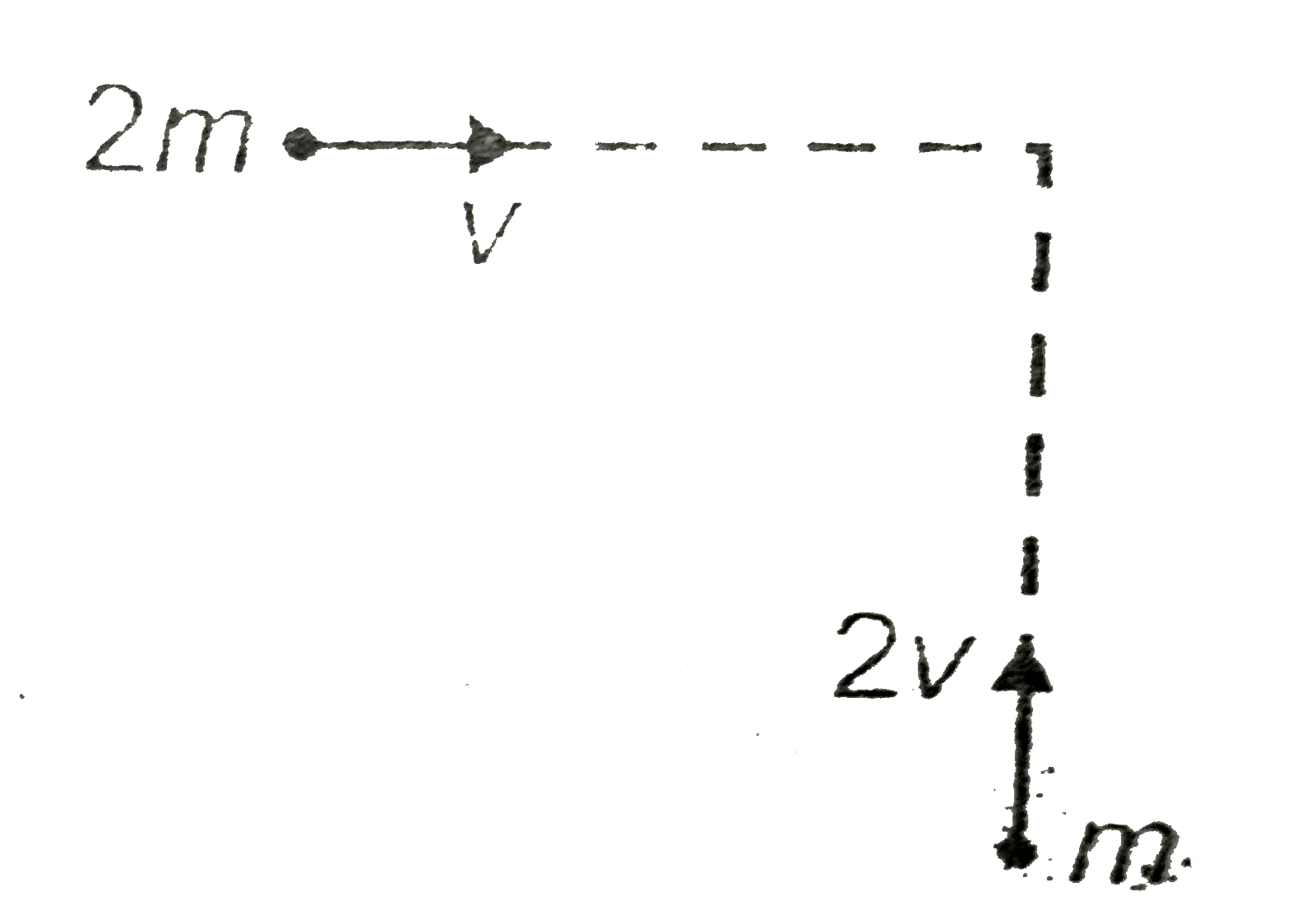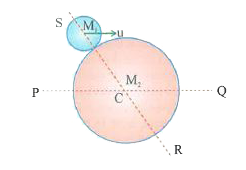An oscillator of mass M is at rest in its equilibrium position in a potential V=12k(x−X)2. A particle of mass m comes from right with speed u and collides completely inelastically with M and sticks to it. The process repeats every time the oscillator crosses its equilibrium position. The amplitude of oscilllations after 13 collisions is : (M=10, m=5, u=1 ,k=1)
23
1√3
√35
12
Given , M = 10 , m = 5 , u = 1 , k = 1
After 12 collisions of mass M+12m is at rest in its equilibrium position and block of mass m comes with speed u ans collides in - elastically with it . Let velocity of the combined system is v .

μ=(M+13m)v
v=muM+13m=u15
v=ωA,where ω=√KM+13m
⇒ u15=√kM+13m×A⇒A=115√751=1√3
Topper's Solved these Questions
- BOOK - MODERN PUBLICATIONCHAPTER - WORK, ENERGY AND POWER EXERCISE - Objective Type Questions (JEE (Advanced) for IIT Entrance)7videos
WORK, ENERGY AND POWER
- BOOK - MODERN PUBLICATIONCHAPTER - WORK, ENERGY AND POWER EXERCISE - Objective Type Questions (C. Multiple Choice Questions)16videos
WORK, ENERGY AND POWER
- BOOK - MODERN PUBLICATIONCHAPTER - WORK, ENERGY AND POWER EXERCISE - Objective Type Questions (B. Multiple Choice Questions)46videos
WORK, ENERGY AND POWER
- BOOK - MODERN PUBLICATIONCHAPTER - WAVESEXERCISE - CHAPTER PRACTICE TEST14videos
WAVES
Similar Questions
A particle of mass m moving with speed u collides perfectly inelastically with another particle of mass 2m at rest. Find loss of kinetic energy of system in the collision.
View SolutionA particle of mass m moving with velocity u collides elastically head on with a particle of mass 2m at rest. After collision the heavier particle moves with velocity?
View Solution
Knowledge Check
- Question 1 - Select One
A particle of mass m moving with speed u collides perfectly inelastically with another particle of mass 3 m at rest. Loss of KE of system in the collision is
A34μ2B38μ2C14μ2D18μ2 - Question 2 - Select One
Two particles of same mass m moving with velocities u1 and u2 collide perfectly inelastically. The loss of energy would be :
A1/2m(u1−u2)2B1/4m(u1−u2)2Cm(u1−u2)2D2m(u1−u2)2 - Question 3 - Select One
Two identical mass M moving with velocity u1andu2 collide perfectly inelastically. The loss in kinetic energy is
AM2(u2−u1)2BM2(u21−u22)CM4(u2−u1)2DM4(u21−u22)
An object of mass m1 moving with speed v collides with another object of mass m2 at rest and stick to it. Find the impulse imparted to the second object.
View SolutionTwo particles of mass 2m and m moving with speed v and 2v respectively pependicular to each other collides perfectly inelastically, then

Speed of the particles after collisionView SolutionA particle of mass m1 moves with velocity v1 and collides with another particle at rest of equal mass. The velocity of the second particle after the elastic collision is
View SolutionThe amplitude of an oscillating simple pendulum is 10 cm and its period is 4 sec . Its speed after 1 sec after it passes its equilibrium position, is
View SolutionAn object of mass M1 moving horizontally with speed u collides elastically with another object of mass M2 at rest. Select correct statement.
 View Solution
View Solution

